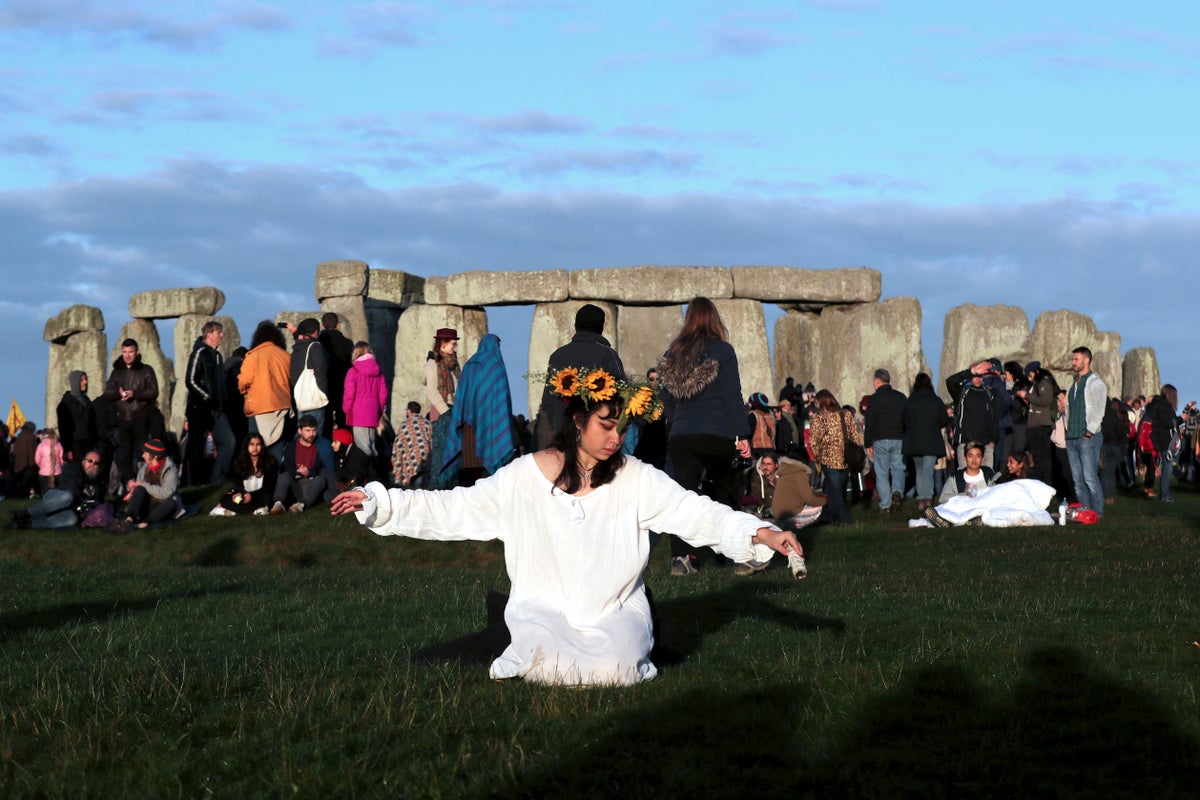
All hail the rising sun.
A seemingly curious alliance of druids, pagans, hippies, local residents, tourists and costumed witches and wizards are gathering around a prehistoric stone circle on a plain in southern England to express their devotion to the sun, or to have some communal fun.
They will stay and celebrate at Stonehenge for the night and greet sunrise on Wednesday, which will be the longest day in the Northern Hemisphere.
All over the U.K., optimism will reign supreme as summer officially starts. It's no coincidence that the nearby Glastonbury Festival, one of the world's biggest music events, opens its doors on Wednesday, too. Both Stonehenge and Glastonbury supposedly lie on ley lines — mystical energy connections across the U.K.
For the thousands making the pilgrimage to Stonehenge, approximately 80 miles (128 kilometers) southwest of London, it is more than looking forward to Elton John at Glastonbury or a few ciders in the sun.
For druids, modern-day spiritualists linked to the ancient Celtic religious order, Stonehenge has a centuries-long importance, and they will be there to perform dawn rituals around the solstice in their traditional white robes. It's effectively all about the cycle of life, of death and rebirth.
This year, the summer solstice at Stonehenge goes from 7 p.m. Tuesday through 8 a.m. Wednesday. For this one night, worshippers are allowed to spend the night inside the stone circle. Others chant or play their acoustic guitars. Alcohol is prohibited, as are sound systems. Bring a blanket, but no sleeping bags, please. And definitely, no climbing on the stones.
The rules have been tightened over the decades, certainly during the coronavirus pandemic. Back in the less-restrained past, tens of thousands would travel by foot, car, bus or motorcycle to worship at the solar temple, or just have a bit of fun.
It is a symbol of British culture and history and remains one of the country’s biggest tourist draws, despite the seemingly permanent traffic jams on the nearby A303 highway, a popular route for motorists traveling to and from the southwest of England.
Stonehenge, one of the world’s most famous prehistoric monuments and a World Heritage Site, was built on the flat lands of Salisbury Plain in stages starting 5,000 years ago, with the unique stone circle erected in the late Neolithic period about 2,500 B.C. Some of the stones, the so-called bluestones, are known to have come from the Preseli Hills in southwest Wales, nearly 150 miles (240 kilometers) away, but the origins of others remain a mystery.
The site’s meaning has been the subject of vigorous debate, with some theories seemingly more outlandish, if not alien, than others.
English Heritage, a charity that manages hundreds of historic sites, notes several explanations — from Stonehenge being a coronation place for Danish kings, a druid temple, a cult center for healing, or an astronomical computer for predicting eclipses and solar events.
The charity said the most generally accepted interpretation "is that of a prehistoric temple aligned with the movements of the sun.”
After all, the stones match perfectly with the sun at both the summer and winter solstices. On the summer solstice, the sun rises behind the Heel Stone in the northeast part of the horizon and its first rays shine into the heart of the stone circle. When the sky is clear, those rays are a triumphant spectacle to behold.
But, let's be honest, that's not always the case during the British summer. After weeks of dry and sunny weather, the forecast for Tuesday night and Wednesday morning is a bit iffy.
It's time to pray to the sun king.







